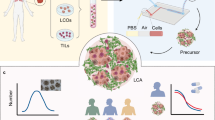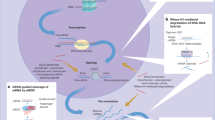Abstract
To find an efficient transfection method for metastatic cancer cells, we established a three-dimensional (3D) growth model for solid tumor cells to mimic the metastatic cancer cells in the vascular system and compared the efficiency of several transfection methods in vitro. We found that it was optimal to transfect two-dimensional cells in vitro and detach them for 3D growth 6 h later. The transfection efficiency of this method was high, and the results were reliable. This method can be used to deliver several types of small molecules into the 3D metastatic cell model. Using this method, we increased our understanding of why drugs that are effective in vitro cannot treat the disease in vivo. If this phenomenon occurs due to the resistance of the cells to the drug, other treatment agents for the disease must be identified. However, if this occurs because the agent cannot reach the cells inside the 3D aggregate, we can improve the delivery efficiency by using methods that target the agent to all cells. Briefly, the method introduced in this study will contribute to future research focusing on the 3D metastatic cell model as well as on drug development for various solid tumors.
This is a preview of subscription content, access via your institution
Access options
Subscribe to this journal
Receive 12 print issues and online access
$259.00 per year
only $21.58 per issue
Buy this article
- Purchase on Springer Link
- Instant access to full article PDF
Prices may be subject to local taxes which are calculated during checkout




Similar content being viewed by others
References
Bissell MJ, Rizki A, Mian IS . Tissue architecture: the ultimate regulator of breast epithelial function. Curr Opin Cell Biol 2003; 15: 753–762.
Weaver VM, Petersen OW, Wang F, Larabell CA, Briand P, Damsky C et al. Reversion of the malignant phenotype of human breast cells in three-dimensional culture and in vivo by integrin blocking antibodies. J Cell Biol 1997; 137: 231–245.
Abbott A . Cell culture: biology's new dimension. Nature 2003; 424: 870–872.
Bissell MJ, Radisky D . Putting tumours in context. Nat Rev Cancer 2001; 1: 46–54.
Breslin S, O'Driscoll L . Three-dimensional cell culture: the missing link in drug discovery. Drug Discov Today 2012; 18: 240–249.
Arrondeau J, Gan HK, Razak AR, Paoletti X, Le Tourneau C . Development of anti-cancer drugs. Discov Med 2010; 10: 355–362.
Hait WN . Anticancer drug development: the grand challenges. Nat Rev Drug Discov 2010; 9: 253–254.
Hopkins AL . Network pharmacology: the next paradigm in drug discovery. Nat Chem Biol 2008; 4: 682–690.
Kola I . The state of innovation in drug development. Clin Pharmacol Therap 2008; 83: 227–230.
DiMasi JA, Grabowski HG . Economics of new oncology drug development. J Clin Oncol 2007; 25: 209–216.
Mazzoleni G, Di Lorenzo D, Steimberg N . Modelling tissues in 3D: the next future of pharmaco-toxicology and food research? Genes Nutr 2009; 4: 13–22.
Sleeman J, Steeg PS . Cancer metastasis as a therapeutic target. Eur J cancer 2010; 46: 1177–1180.
Chitcholtan K, Asselin E, Parent S, Sykes PH, Evans JJ . Differences in growth properties of endometrial cancer in three dimensional (3D) culture and 2D cell monolayer. Exp Cell Res 2013; 319: 75–87.
Zschenker O, Streichert T, Hehlgans S, Cordes N . Genome-wide gene expression analysis in cancer cells reveals 3D growth to affect ECM and processes associated with cell adhesion but not DNA repair. PLoS One 2012; 7: e34279.
Yang X, Sarvestani SK, Moeinzadeh S, He X, Jabbari E . Three-dimensional-engineered matrix to study cancer stem cells and tumorsphere formation: effect of matrix modulus. Tissue Eng Part A 2012; 19: 669–684.
Xu Y, Li Q, Li XY, Yang QY, Xu WW, Liu GL . Short-term anti-vascular endothelial growth factor treatment elicits vasculogenic mimicry formation of tumors to accelerate metastasis. J Exp Clin Cancer Res 2012; 31: 16.
Zhang Z, Cao L, Li J, Liang X, Liu Y, Liu H et al. Acquisition of anoikis resistance reveals a synoikis-like survival style in BEL7402 hepatoma cells. Cancer Lett 2008; 267: 106–115.
Cao L, Han L, Zhang Z, Li J, Qu Z, Du J et al. Involvement of anoikis-resistance in the metastasis of hepatoma cells. Exp Cell Res 2009; 315: 1148–1156.
Loberg RD, Fridman Y, Pienta BA, Keller ET, McCauley LK, Taichman RS et al. Detection and isolation of circulating tumor cells in urologic cancers: a review. Neoplasia 2004; 6: 302–309.
Geiger TR, Peeper DS . Critical role for TrkB kinase function in anoikis suppression, tumorigenesis, and metastasis. Cancer Res 2007; 67: 6221–6229.
Zhang Y, Lu H, Dazin P, Kapila Y . Squamous cell carcinoma cell aggregates escape suspension-induced, p53-mediated anoikis: fibronectin and integrin alphav mediate survival signals through focal adhesion kinase. J Biol Chem 2004; 279: 48342–48349.
LaBarbera DV, Reid BG, Yoo BH . The multicellular tumor spheroid model for high-throughput cancer drug discovery. Expert Opin Drug Discov 2012; 7: 819–830.
Alpaugh ML, Barsky SH . Reversible model of spheroid formation allows for high efficiency of gene delivery ex vivo and accurate gene assessment in vivo. Human Gene Ther 2002; 13: 1245–1258.
Zhang Z, Han L, Cao L, Liang X, Liu Y, Liu H et al. Aggregation formation mediated anoikis resistance of BEL7402 hepatoma cells. Folia Histochem Cytobiol 2008; 46: 331–336.
Cui Z, Mumper RJ . The effect of co-administration of adjuvants with a nanoparticle-based genetic vaccine delivery system on the resulting immune responses. Eur J Pharm Biopharm 2003; 55: 11–18.
Cheng L, Ziegelhoffer PR, Yang NS . In vivo promoter activity and transgene expression in mammalian somatic tissues evaluated by using particle bombardment. Proc Natl Acad Sci USA 1993; 90: 4455–4459.
O'Brien JA, Lummis SC . Biolistic transfection of neurons in organotypic brain slices. Methods Mol Biol 2013; 940: 157–166.
Acknowledgements
The authors gratefully acknowledge Professor Qihong Huang (The Wistar Institute, University of Pennsylvania, Philadelphia, PA, USA) and Editors Benjamin G, Adam P and Elizabeth G (American Journal Experts, Durham, NC, USA) for their critically constructive suggestions regarding our manuscript. This work was supported by grants from the Natural Science Foundation of China (30700357, 30772031 and 30873025), the Natural Science Foundation of Shandong Province (ZR2010HM033) and Science and Technology Development of Shandong Province (2013YD18016).
Author information
Authors and Affiliations
Corresponding author
Ethics declarations
Competing interests
The authors declare no conflict of interest.
Rights and permissions
About this article
Cite this article
Kong, Q., Wu, G., Han, L. et al. A transfection method of PS-asODNs targeting ANGPTL4 in multicellular structures of hepatocarcinoma cell line. Cancer Gene Ther 22, 285–290 (2015). https://doi.org/10.1038/cgt.2015.22
Received:
Revised:
Accepted:
Published:
Issue Date:
DOI: https://doi.org/10.1038/cgt.2015.22
This article is cited by
-
Intracellular ROS mediates gas plasma-facilitated cellular transfection in 2D and 3D cultures
Scientific Reports (2016)



